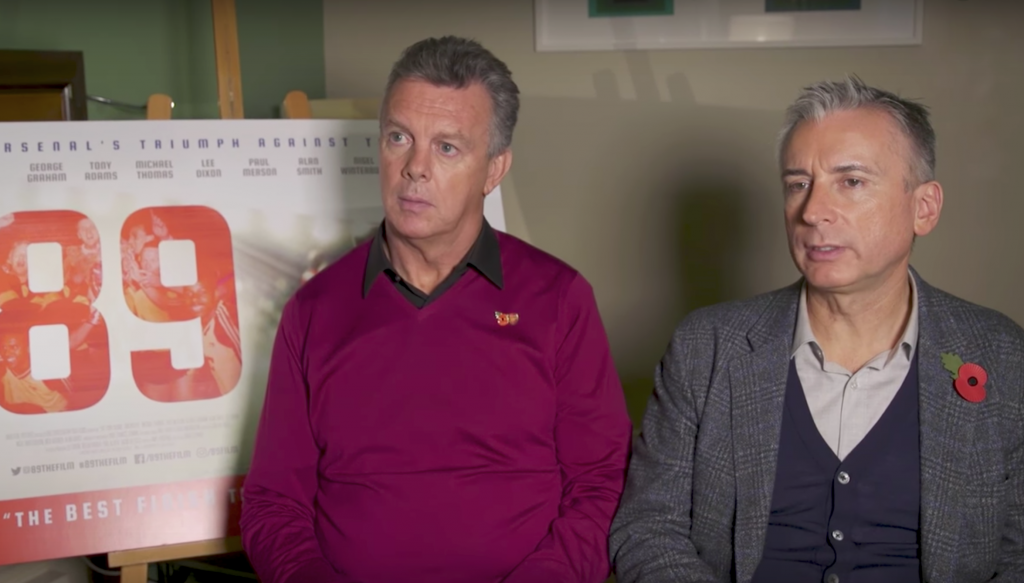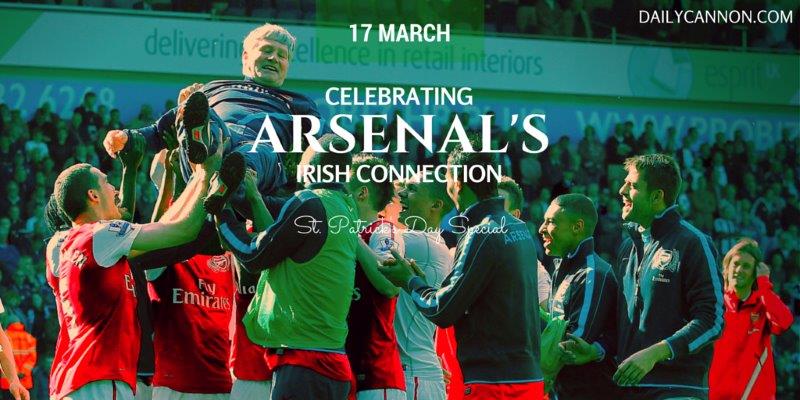On St. Patrick’s Day, this article delves into the enduring relationship between Arsenal and its Irish supporters, exploring historical connections, key figures, and the widespread fan base across Ireland, North and South.
It was initially published a couple of years ago and has been updated, if you notice any player’s we’re missed, please do let us know.
Irish influences in Arsenal’s history
England’s ‘Player of the Year’ in 1979, he still gets voted into every Arsenal all-time eleven, and older fans inform me that he was never really replaced until the arrival of Dennis Bergkamp. What most people don’t know, however, is that despite the London professional careers of his elder brothers Pat and Ray (both played for Milwall and QPR), the young Liam initially hated his time as an Arsenal junior, leaving after a few months, and it took weeks of persuasion by the Arsenal back-room staff and Irish scouts to convince him to give it another try.

Homesickness was not uncommon among Arsenal’s Irish youngsters, as recently highlighted by John Devine when interviewed by
famous Irish Gooner, Andrew Mangan, AKA Arseblog. It was only really through the club’s well established network of families and landladies for young players that Arsenal were so able to rely on a healthy youth production line, which the ultimately unsuccessful Billy Wright had done so much to champion whilst at the helm in the 1960s.
Although later a source of irritation after forcing a move to Manchester United (remind you of anyone?!), Brady’s fellow Dubliner, Frank Stapleton, was almost as important to the club at the time, and the two had the archetypal telepathic on-field relationship.
Stapleton was widely regarded as one of the best headers of the ball in the game at the time, and showed a deftness of touch later echoed by Alan Smith, and had a formidable goal scoring record in the cup competitions that the club excelled in at the time. A fan’s favourite and club player of the year in 1977 and 1980, he refused to sign a new contract in 1981 (perhaps seeing the subsequent seasons of mediocrity on the horizon), and for the second time in two years the club lost one of its stars for a vastly reduced price set by a dubious transfer tribunal, only this time to a domestic rival.
He never quite hit the same heights at Man Utd, despite moving there in his prime, but did win the FA Cup twice before his career slightly petered out. Given that he had supported them as a child, it’s no surprise he went to Manchester United, and self-identified as a Man United man. He was never forgiven by Arsenal fans, as he had negotiated with Ron Atkinson behind Arsenal’s back, and he later admitted it was ultimately about money, which was much more taboo in those days. He is currently Assistant Manager of Jordan, working for his old Utd teammate, Ray Wilkins.

The third of the golden Eire trinity was elegant defender David O’Leary. Coming over for a trial on the same trip as the later injured John Devine, he had actually been born in Stoke Newington before moving back to Dublin as a three-year-old.
A first team debut at 17 served notice of his talent, but no-one could have anticipated him clocking up 722 appearances and a stint as captain for the club over an 18-year career. After finally winning the League title in 1989 to go with his League Cup victory in 1987 and FA Cup win with the rest of the Dubliners in 1979, O’Leary was one of many to fall foul of George Graham‘s draconian style, training with the reserves for a time. But his professionalism and commitment saw him return to the first team squad to win another title winners medal in 1991 as his career was winding down, and ultimately become George Graham’s assistant at Leeds United, before an exciting period at the helm of the club. He has also started to return to the stands at Arsenal as a fan in recent years.

By now an elder statesman in the team, Pat Rice had matured from apprentice to club captain. Born in Belfast on St. Patrick’s Day, he was the one player to win both the 1970-71 double and 1979 FA Cup Final with the club. Born a fortnight before his eventual full-back partner and fellow Belfastian, Sammy Nelson (who played nearly 400 times for the club himself), his family had moved to within spitting distance of Highbury when he was ten-years-old, and he had grown up idolising the club.

